Microsoft Azure Deployment
You can deploy a CipherTrust Manager within the Microsoft Azure Cloud Computing Platform, including in the Azure Government environment (Arizona, Iowa, Virginia, and Texas regions).
Minimum Requirements
To deploy a CipherTrust Manager instance, the following minimum requirements apply:
System volume: 50 GB for evaluation, 100 GB for production
Memory: 16 GB
vCPUs: 2
NICs: 1
Note
These minimum system requirements are for a system with light to moderate load. For applications that heavily load the system, additional memory and CPU allocation are required. The system volume holds all data as well as backups.
Deploying in Azure
This section provides the steps for deploying a Virtual CipherTrust Manager k170v instance in Microsoft Azure. Refer to the Azure documentation for general information on launching a VM in Microsoft Azure.
Prerequisites
If using a Windows client, use PuTTY or similar utility to SSH to your k170v instance as KeySecure Administrator (ksadmin).
If needed, use PuTTYgen or similar utility to format the SSH Key Pair.
If using a Linux client: use, SSH to login as KeySecure Administrator (ksadmin).
To launch a Virtual CipherTrust Manager k170v instance
Sign in to the Azure or Azure Government portal.
Search for Thales Virtual CipherTrust Manager on Azure Marketplace. You can also use the Azure CLI command
Get-AzVMImage -location eastus2 -PublisherName thalesdiscplusainc1596561677238 -Offer cm_k170v -sku ciphertrust_manager.Note
Older versions of Virtual CipherTrust Manager have been removed from Azure Marketplace.
If you want a version that is unavailable on Azure Marketplace, contact Thales Customer Support for a CipherTrust Manager VHD file.
Upload the VHD file to Azure and create a virtual machine, following Microsoft documentation.
On the Azure or Azure Government portal, select the Virtual CipherTrust Manager image from the Virtual Machines group.
Note
The following steps apply to the Azure recommended 'Resources Manager' deployment model.
Click Create. The first screen of the Create virtual machine page is displayed.
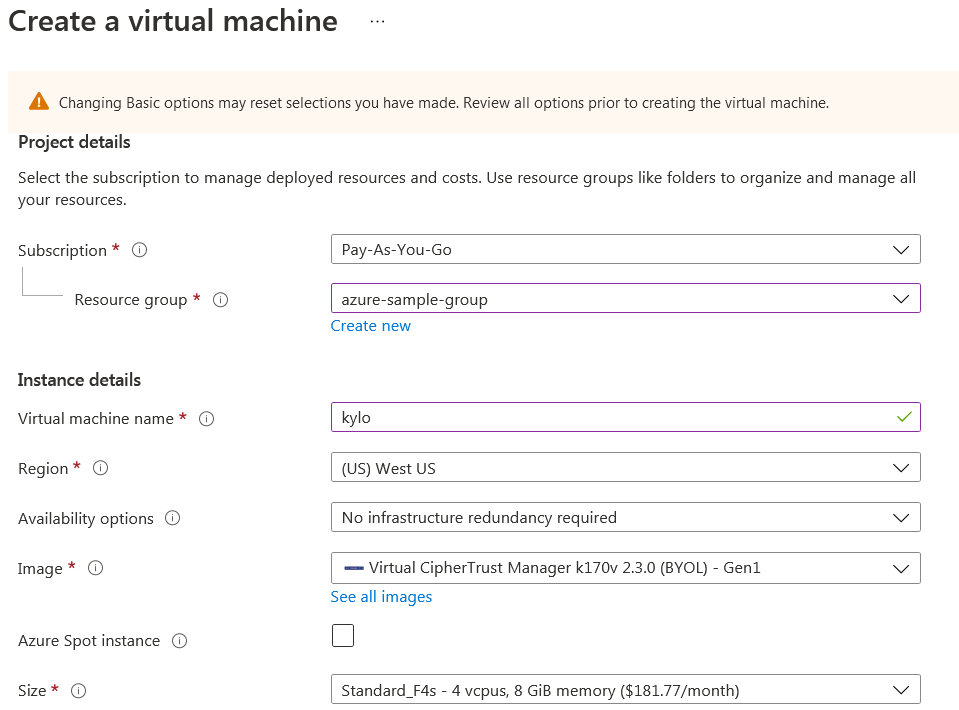
Change the Subscription type if desired.
Select an existing Resource group or enter the name for a new one.
Note
For deployments with Azure Dedicated HSMs, this must be the same resource group as for Luna client host VM and the Dedicated HSM.
Specify the Region of an Azure Datacenter. For example, East US.
Note
For Azure government, this must be one of USGov Arizona, USGov Iowa, USGov Virginia, or USGov Texas.
Enter a Virtual machine name, which is the hostname for the virtual machine your are creating, for example, "mycompany-ciphertrust".
Select the Size for the VM that supports the Minimum Requirements. Standard_F4s is recommended at this time.
Select the SSH Public Key for the Authentication type.
Note
SSH Public Key authentication must be used. Password authentication is not allowed when connecting as the initial user. The key pair should be in Linux (PEM) format, not OpenSSH format.
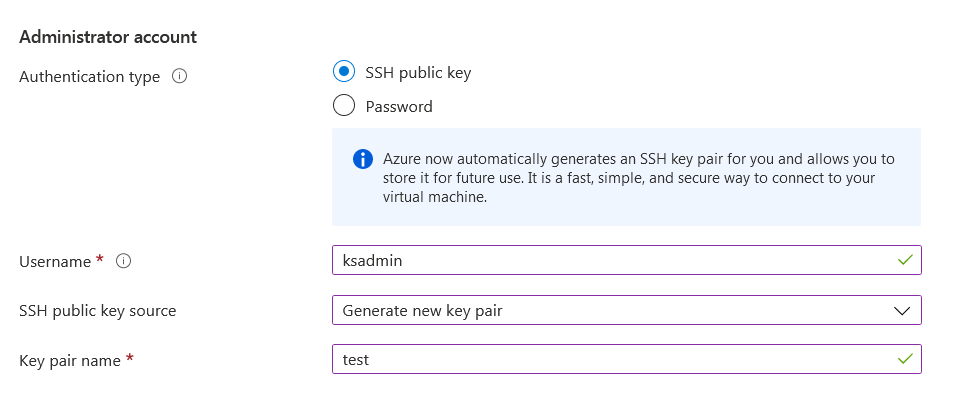
For the Username, enter "ksadmin", the default name for the System Administrator.
Note
You MUST use the name “ksadmin” for this initial user.
For the SSH public key source, select one of "Generate new key pair", "Use existing public key", "Use existing public key stored in Azure".
Warning
It is important that you have access to the key pair you select, otherwise you will not have permissions to perform administrator operations like performing upgrades, advanced logging or an appliance reset.
In the SSH Public Key field, provide the necessary information for the SSH public key source selected in the last step.
Select Next: Disks >. The Disks screen is displayed.
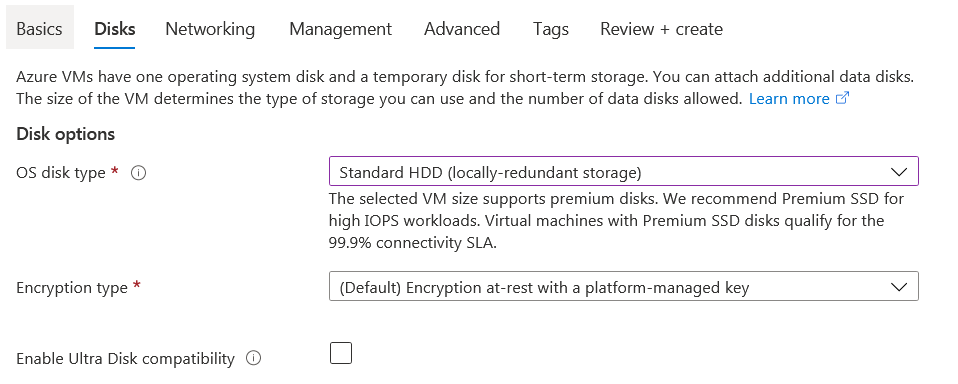
Change the OS disk type to "Standard HDD", unless you desire a faster disk.
Select an Encryption type depending on the Azure-level disk encryption you prefer.
Select Next: Networking >. The Networking screen is displayed.
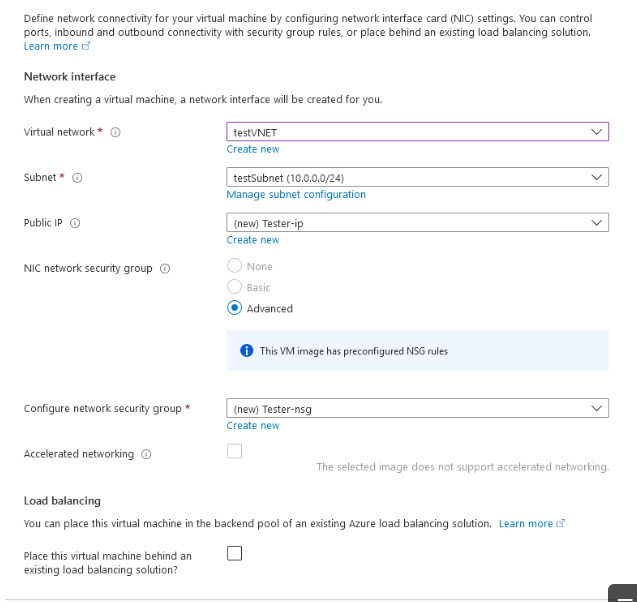
The Virtual Network, Subnet, Public IP and Configure network security group fields are populated with default values for this VM, if you have preset networking values for other Azure VMs. Create new values if needed.
For deployments with Azure Dedicated HSMs, the virtual network must also include the Dedicated HSM instance, and the lunaclient host instance. The subnet must also include the lunaclient host instance; this is subnet is referred to as the "Compute" subnet.
For a list of security groups/ports, refer to Network Security Groups.
Select Next: Management >. The Management screen is displayed.
Select Next: Advanced > The Advanced screen is displayed.
If desired, you can apply cloud-init configuration. Paste cloud-init configuration in the Custom Data field.
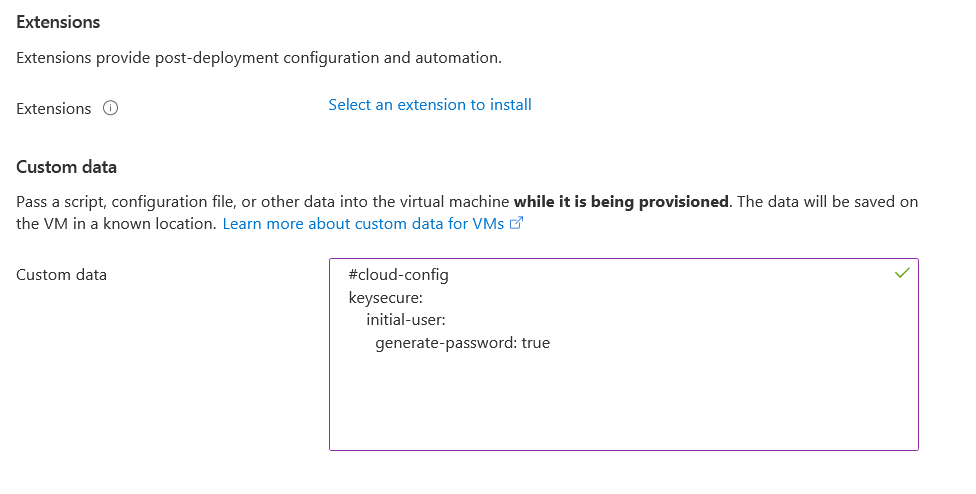
Select Next: Tags >. The Tags screen is displayed.
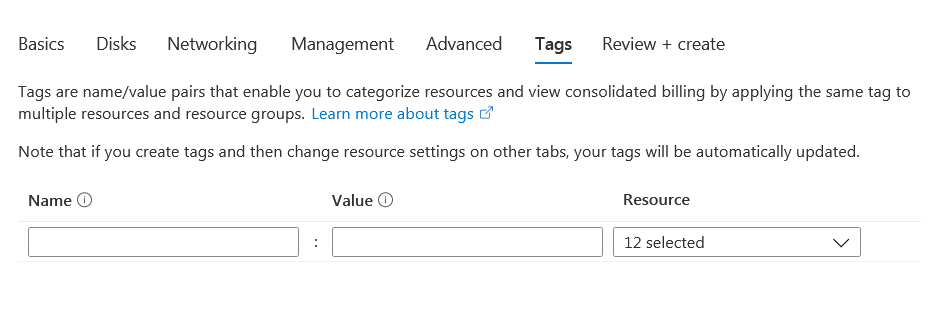
Enter any desired tags.
Select Next: Review + create >. This is the final screen. Enter an email address, and click Create to launch the VM.
Azure will run an evaluation of your virtual machine creation configuration.
If the validation was not successful, a Validation failed message is displayed:

Click on the arrow for details and precede to correct the cause of the validation error.
If the validation is successful, a Validation passed screen is displayed, listing all VM details:
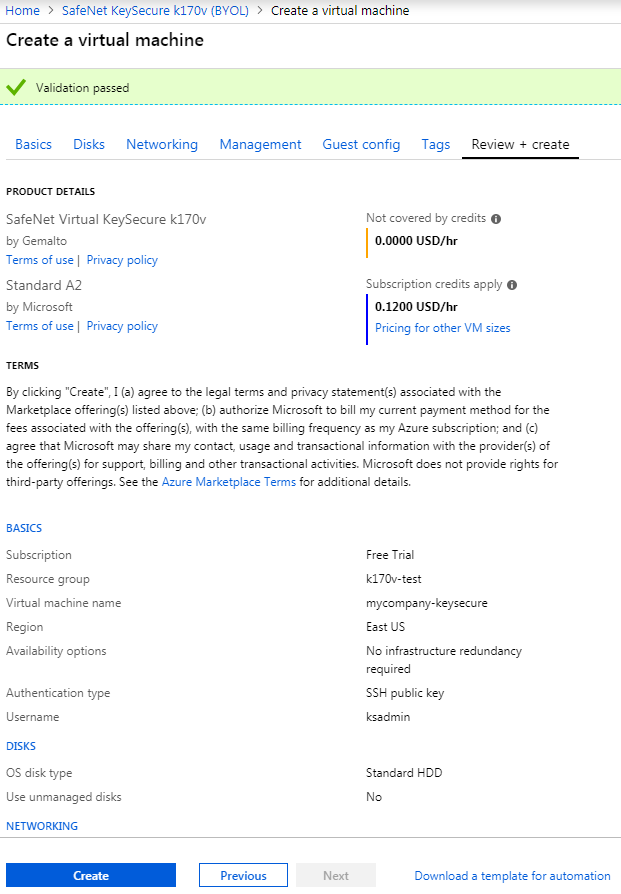
Select Create to begin deployment of this VM. This screen is displayed indicating that deployment is in process.
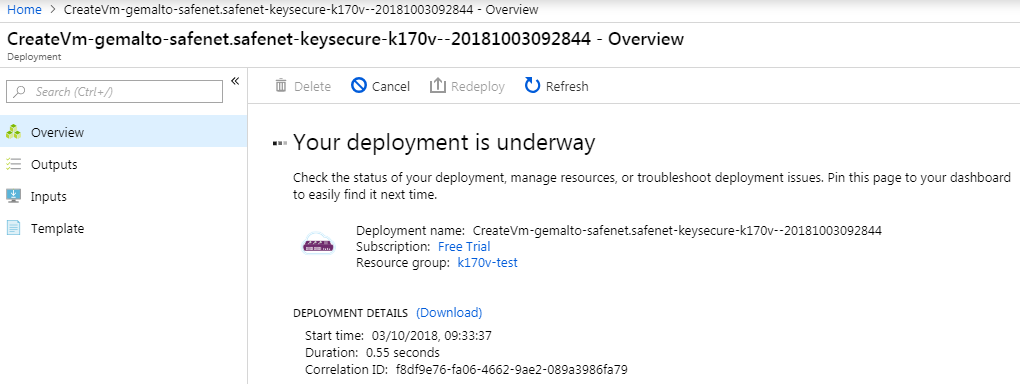
When deployment completes, this screen is displayed, providing access to all resources supporting the new VM.
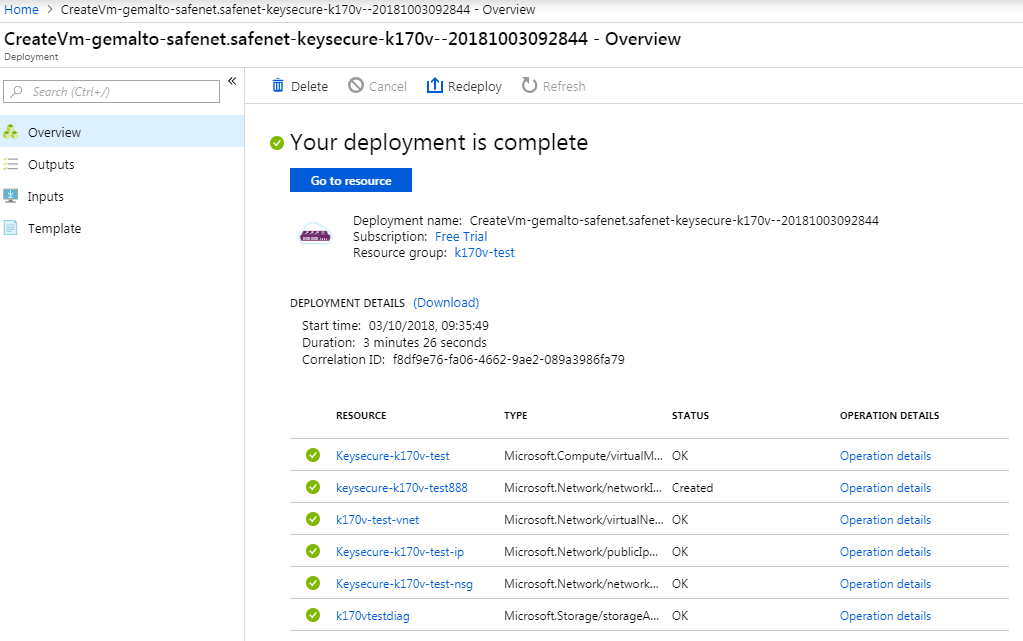
Connect to the CipherTrust Manager Web Page.
Select the resource with the IP address, in this example: Keysecure-k170v-test-ip.
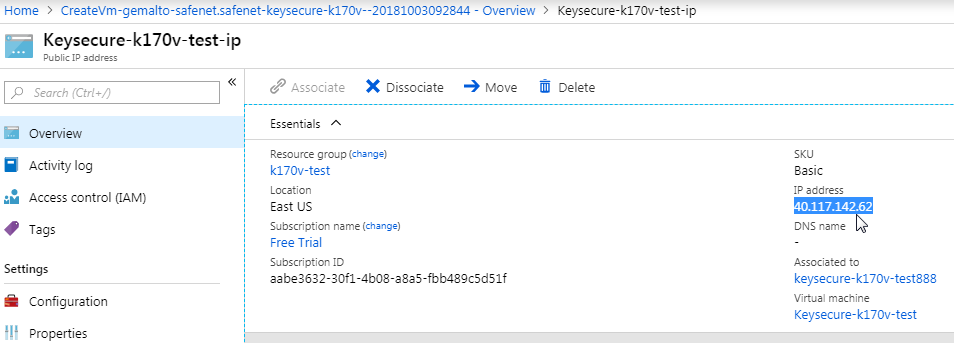
Browse to this IP address (in this example enter https://40.117.142.62). The Log In screen appears.
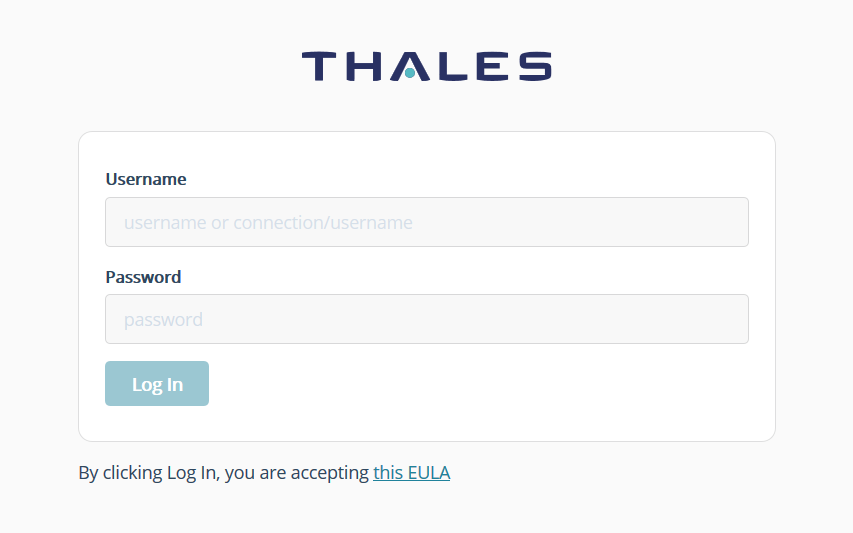
Log in using the initial default credentials: Username = admin, Password = admin
The following notice is displayed:

Note
If the default credentials do not work, you may need to retrieve an autogenerated password, as described in changing the initial password.
Enter a new password using this default Password Policy:
Min length: 8 Max length: 30 Min number of upper cases: 1 Min number of lower cases: 1 Min number of digits: 1 Min number of other characters: 1A new Login screen appears.
Using your new password, log in again. The CipherTrust Manager Web Page appears.
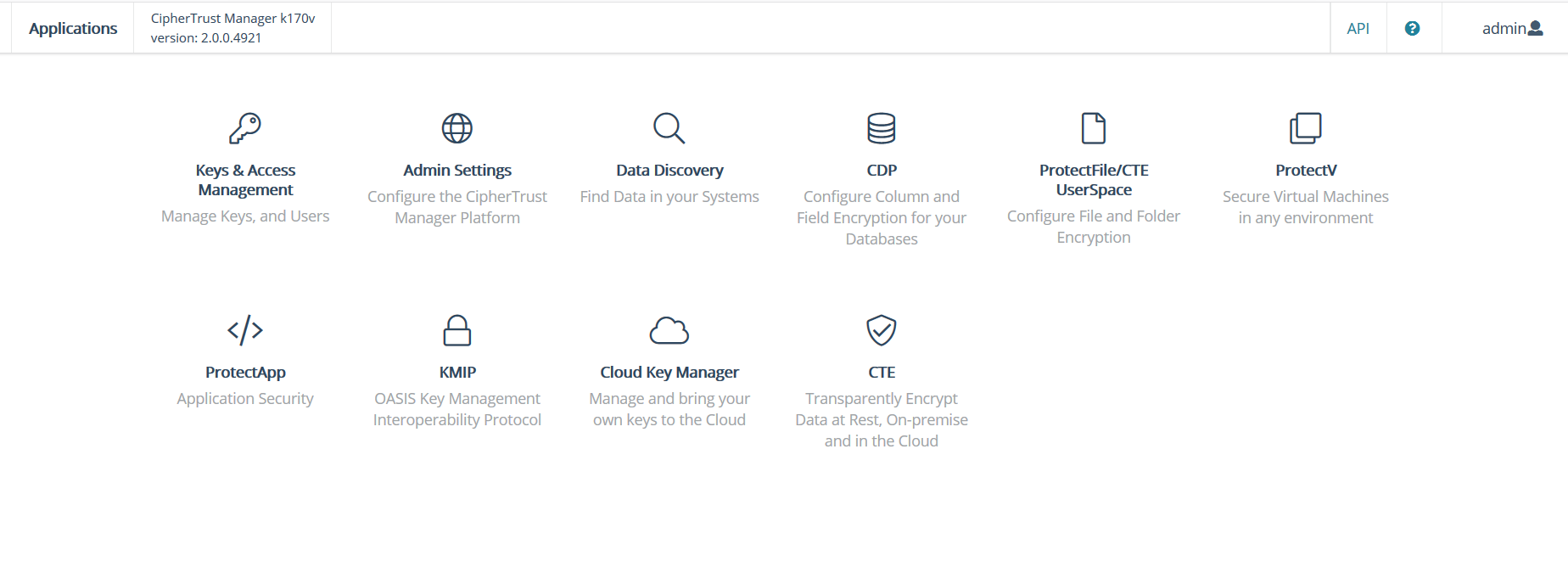
Note
Virtual CipherTrust Manager includes a 90 day trial license. To activate your instance with a term or perpetual license, see Licensing.
Congratulations! You have successfully deployed a k170v instance.

